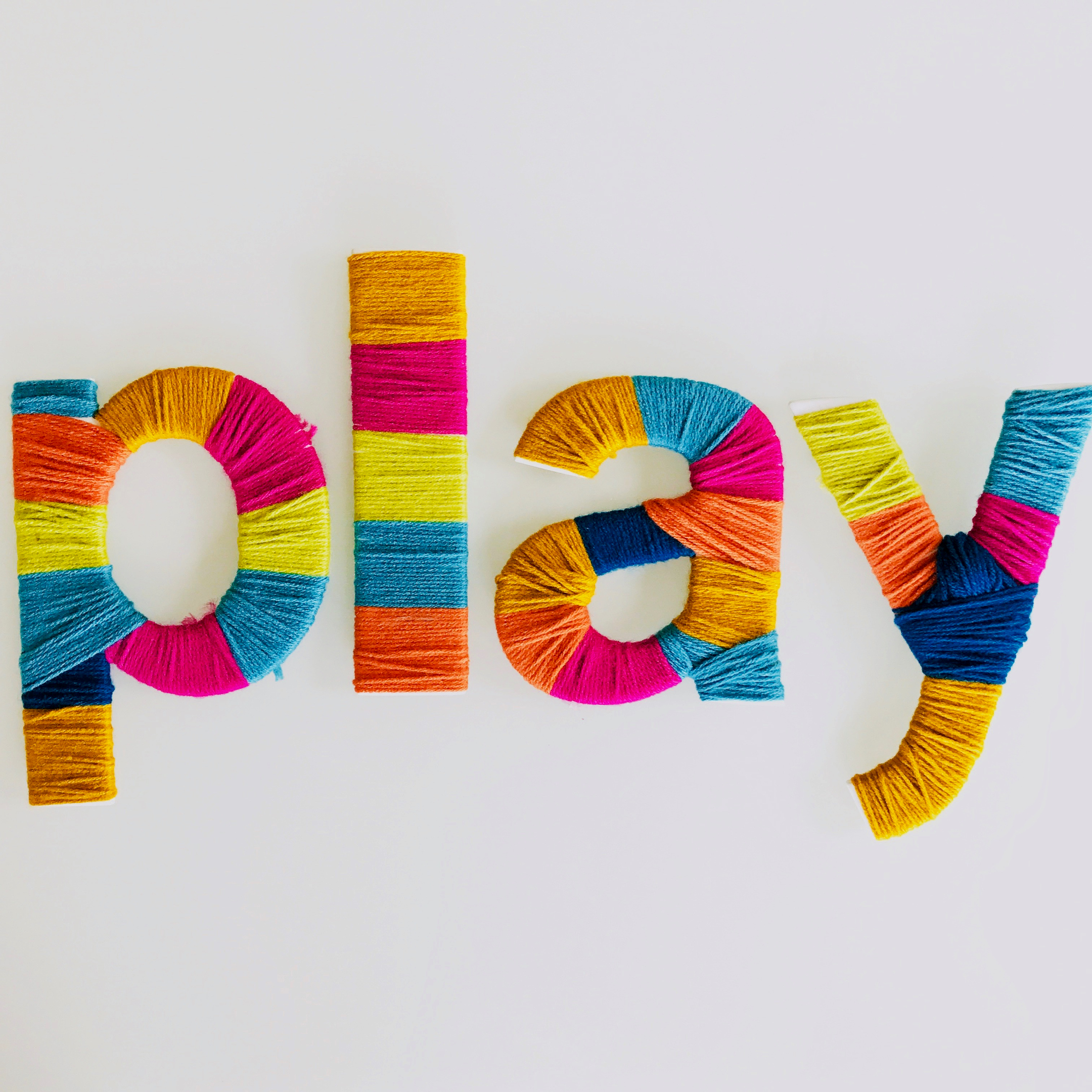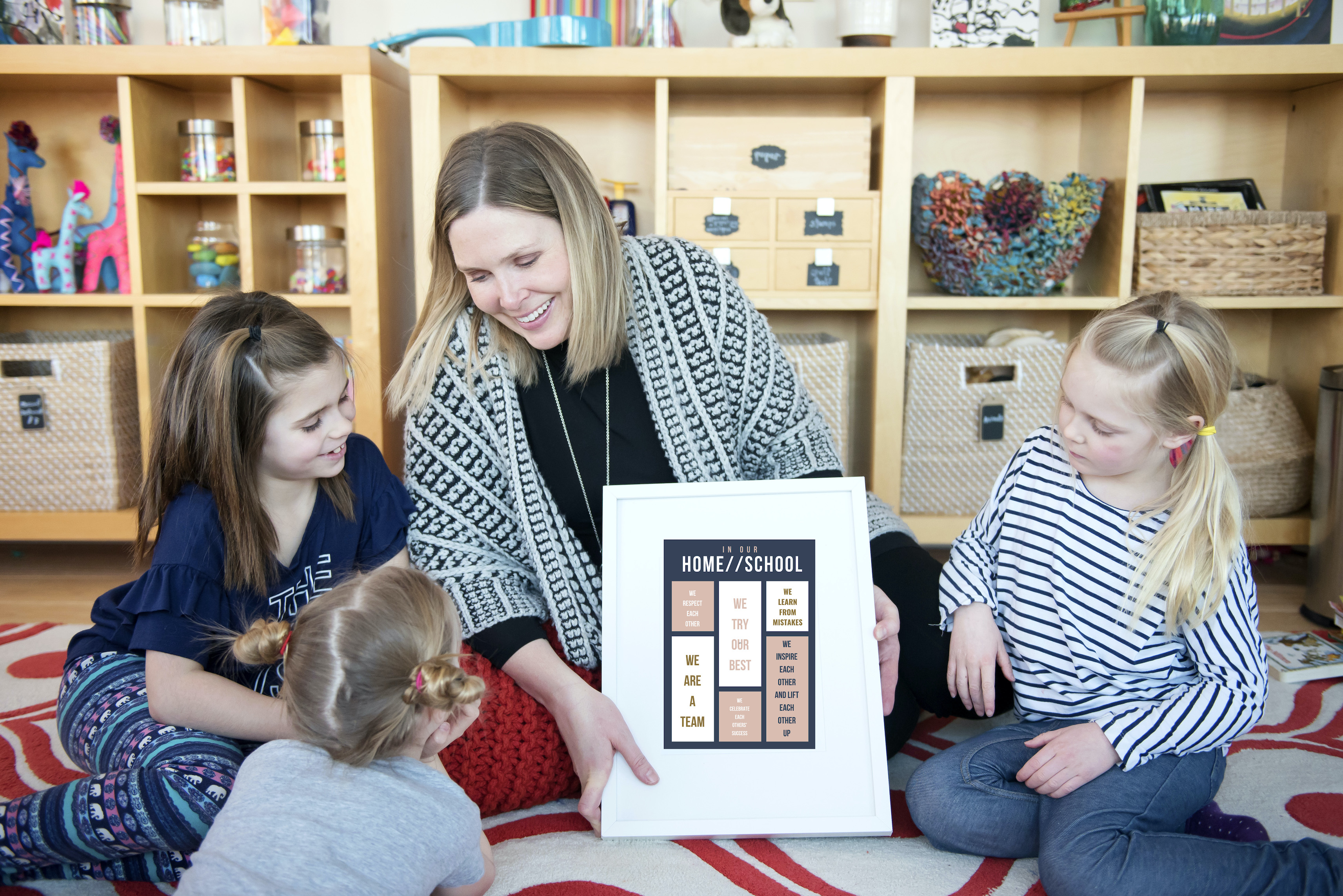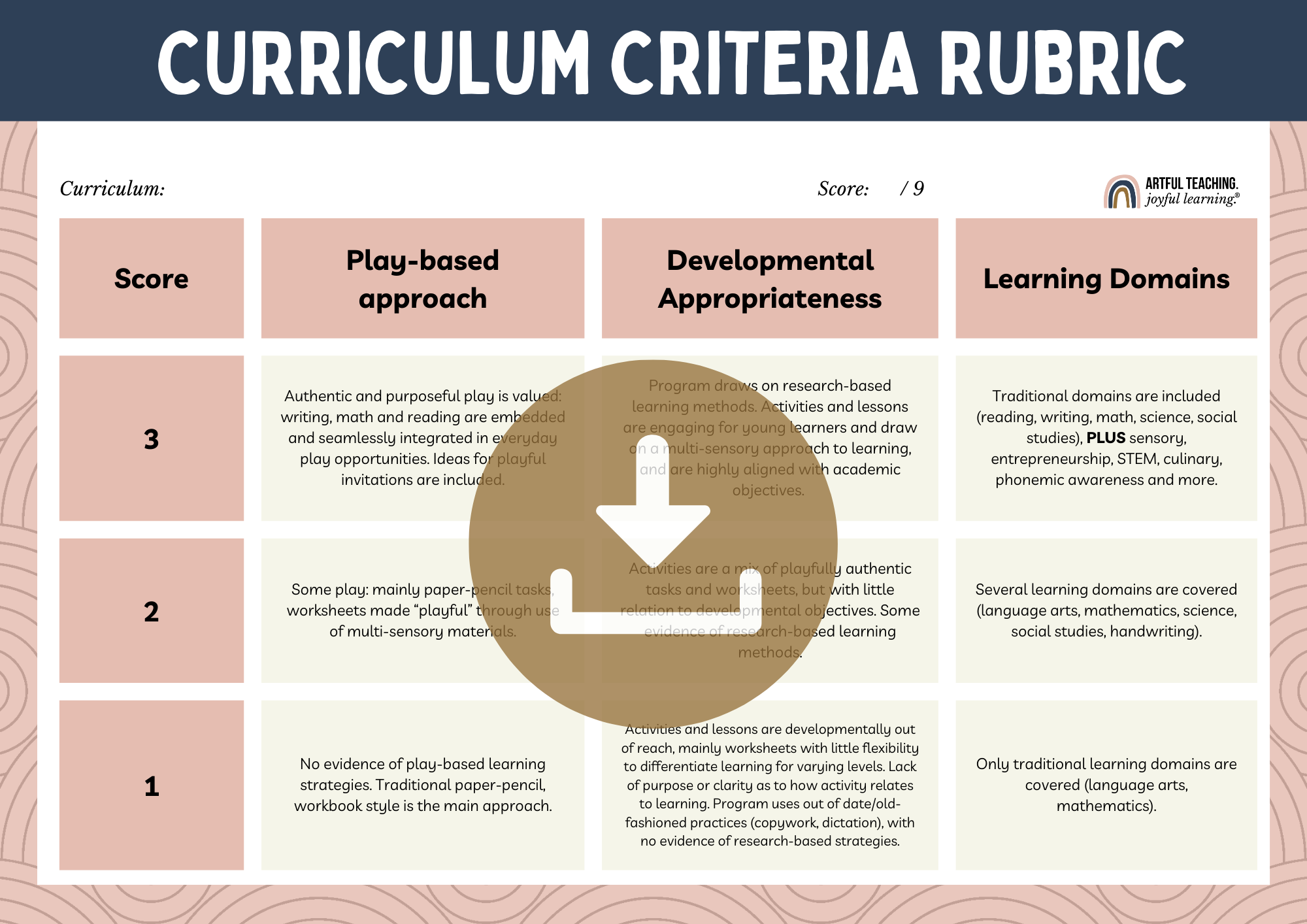8 Criteria for Choosing the Right Curriculum for your Kindergarten Child

How many times have you added a curriculum to your virtual shopping cart 🛒 only to second-guess your decision?
I get it!
Taking the leap into homeschooling your little one wasn't an easy decision, nor is selecting the "perfect" curriculum.
Spoiler: There is no one, "PERFECT," one-size-fits all curriculum.
However, there are certain universal criteria to help make your decision more informed and a little more grounded in educational research.
The following matrix includes a handy checklist of criteria you can use to score your curriculum contenders to ensure you're making the best possible decision for YOU and YOUR child. For each curriculum you're considering, head to the FAQ section and browse through the headings. These sections are typically where the important information can be found.
Read on for my top eight criteria for choosing the "right" curriculum for your early learner.

Play-focused approach
All the research points to the fact that paper-pencil worksheets are NOT the way to go in the Early Years. Your curriculum should have a strong emphasis on play as a primary mode of learning. It should provide opportunities for hands-on, imaginative, and open-ended activities that promote creativity, problem-solving, and exploration. The methodology of the curriculum is a weighty consideration. While paper-pencil, open and go workbook style curricula are easiest on the parent, this methodology is not in keeping with the latest educational research about how young children learn.
Curriculum rating:
1 = no evidence of play. Traditional paper-pencil, workbook style
2 = some play: mainly paper-pencil tasks, worksheets made “playful” through use of multi-sensory materials
3 = authentic and purposeful play is valued: writing, math and reading are embedded in everyday play
 Developmental appropriateness
Developmental appropriateness
So much of what I see out there (usually developed by other homeschool moms with a side-hustle of creating materials for profit) is not developmentally sound. Your curriculum should align with your child's physical, cognitive, social and emotional growth, and allow for age-appropriate activities and challenges. NOT Pinterest-inspired one-off activities, or endless printable-flatlays.
Curriculum rating:
1 = activities and lessons are developmentally out of reach, mainly worksheets with little flexibility to differentiate learning for varying levels. Lack of purpose or clarity as to how activity relates to learning. Program uses out of date/old-fashioned practices (copywork, dictation)
2 = activities are a mix of playfully authentic tasks and worksheets, but with little relation to developmental objectives
3 = activities and lessons are engaging, highly aligned with academic objectives
 Learning Domains
Learning Domains
Look for a curriculum that covers a wide range of learning domains, including language and literacy, math, science, social studies, physical development, creative and culinary arts, social-emotional skills, and sensory play. It should provide a holistic learning experience.
Curriculum rating:
1 = only traditional learning domains are covered (language arts, mathematics)
2 = several learning domains are covered (language arts, mathematics, science, social studies, handwriting)
3 = traditional domains included, PLUS sensory, entrepreneurship, culinary, phonemic awareness and more
 Flexibility and adaptability
Flexibility and adaptability
The curriculum should be flexible to accommodate the unique needs and learning styles of your child. It should allow for customization, adjustments, and adaptations based on your child's interests, strengths, and pace of learning.
Curriculum rating:
1 = program is limited to single age range, with little room for adaptability
2 = program includes some room for flexibility and adaptability for different ability levels
3 = program is highly adaptable, and suitable for “family-style” learning  Educator support and resources
Educator support and resources
Your curriculum should be easy and straightforward to follow including lesson plans, activity ideas, suggested materials and companion resources (books, poems and more), making it easy to implement and navigate the learning process. How much support will you receive? What will you do when you get stuck? Look for programs that offer access to to online communities, forums, or support groups where you can connect with other homeschooling families and seek guidance or advice. Bonus points if the program offers high-touch support from the founder herself (;
Curriculum rating:
1 = program is unclear, objectives and lessons are haphazardly laid out with little direction or focus for educator
2 = program follows a flow, but lacks clear direction
3 = program is well laid out, follows a sequence and sound progression with laid out day plans that are easy to implement and follow
 Engaging and age-appropriate materials
Engaging and age-appropriate materials
Choose a curriculum that offers high-quality and age-appropriate materials, resources, and learning tools. It should include books, manipulatives, online resources, and multimedia and art materials that are engaging and stimulating for your child.
Curriculum rating:
1 = limited array of materials (traditional workbook, paper/pencil, crayons)
2 = some engaging specialty materials, but a strong focus on traditional supplies and commonly used resources
3 = a balanced mix of beautiful art materials, traditional supplies and multi-sensory materials
 Authentic assessment
Authentic assessment
Look for a curriculum that incorporates authentic assessment strategies, rather than solely relying on traditional tests. . It should provide guidance on how to observe and document your child's progress, offering tools for ongoing assessment and reflection on their learning journey.
Curriculum rating:
1 = traditional testing methods or no testing methods
2 = a mix of traditional (paper pencil / one-off testing) and authentic assessment
3 = assessments are seamlessly embedded in everyday activities
Alignment with family values and goals
Consider a curriculum that aligns with your family values, educational goals, and teaching philosophy. It should reflect your beliefs about education, character development, and overall learning objectives for your child.

Curriculum rating:
1 = poorly aligned with family values and goals
2 = somewhat aligned with family values and goals
3 = highly aligned with family values and goals
Click here to download your criteria checklist to evaluate the curriculum you're considering.
Remember, every child is unique, and what works well for one child may not work for another. It's essential to consider your child's interests, learning style, and individual needs when selecting a play-based homeschool kindergarten curriculum. Adapt and customize the curriculum as necessary to create a rich and engaging learning experience for your child at home. YOU are in charge, not the curriculum!
Interested in a highly engaging and interactive play-based curriculum for your little one? Hop on the waitlist! Doors open very soon!



